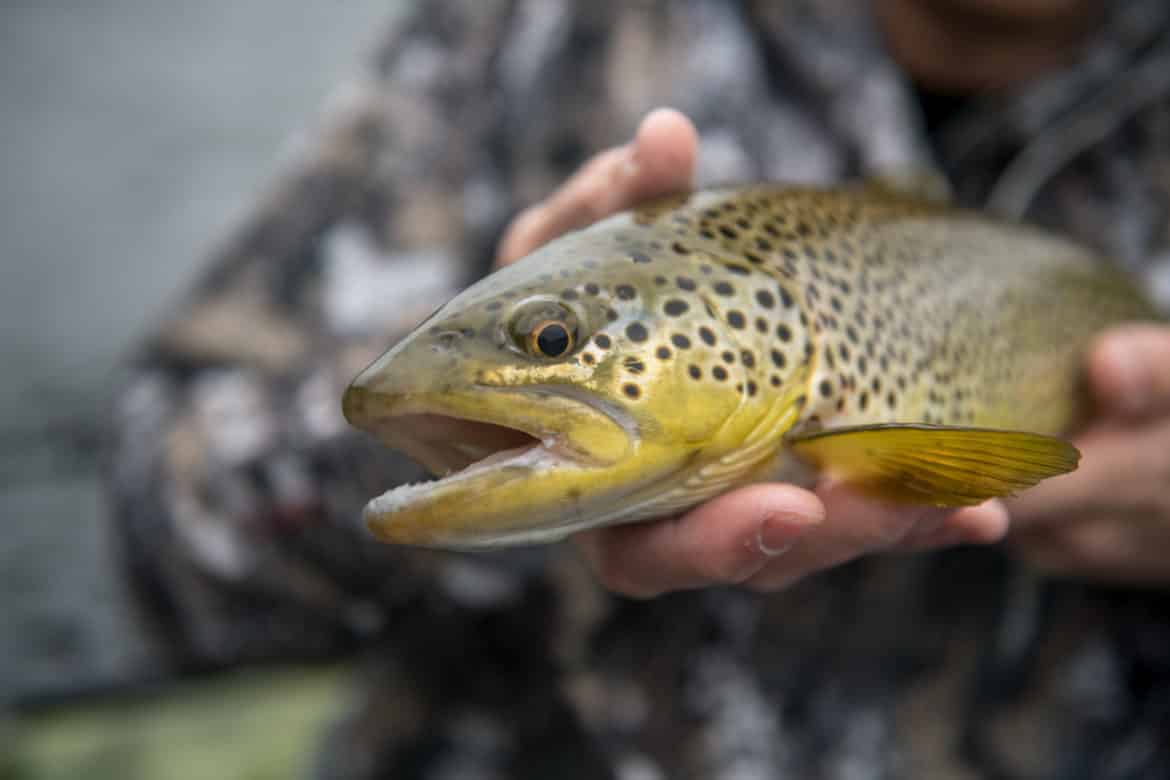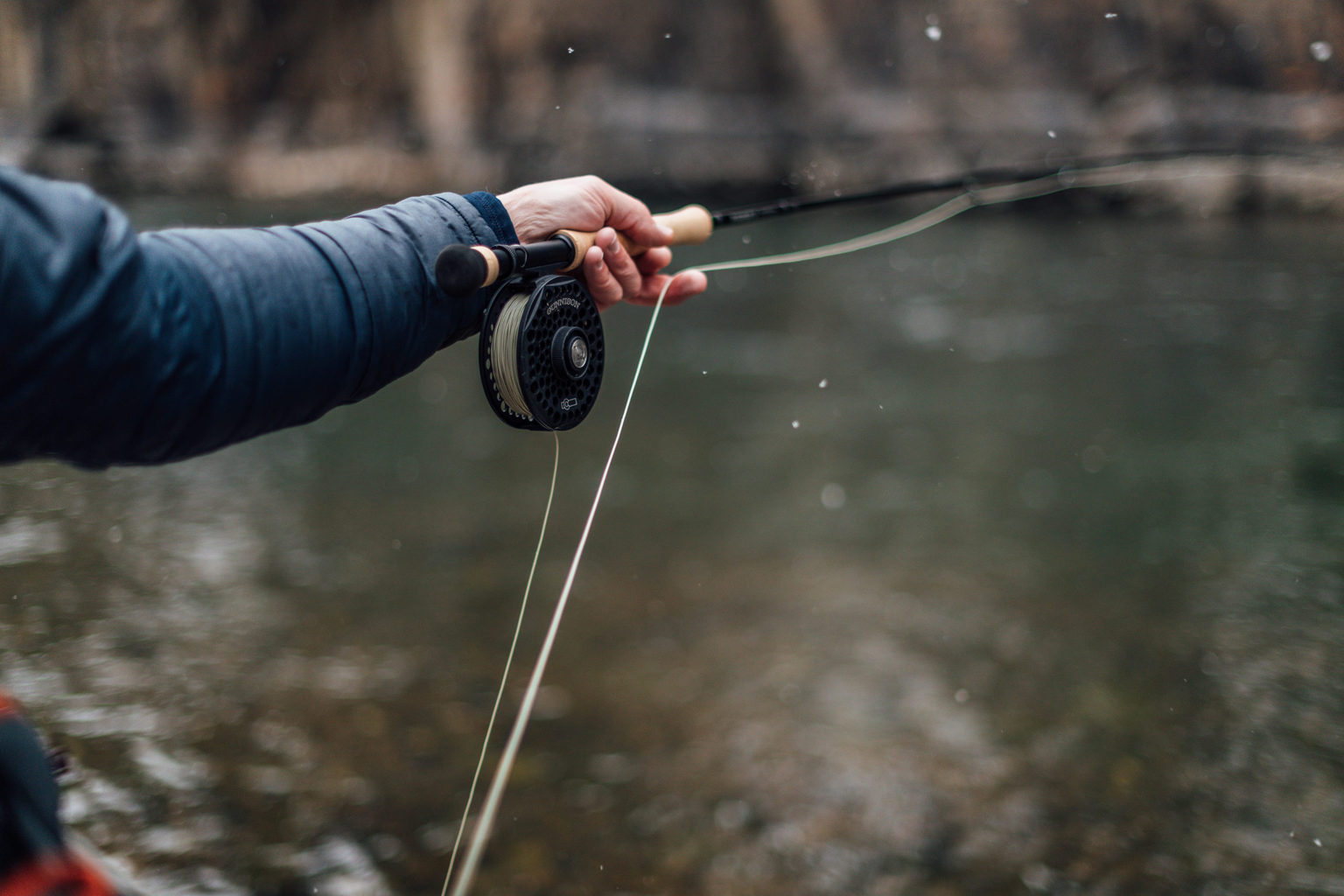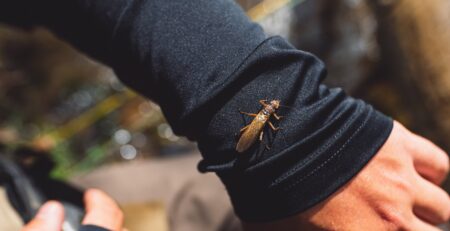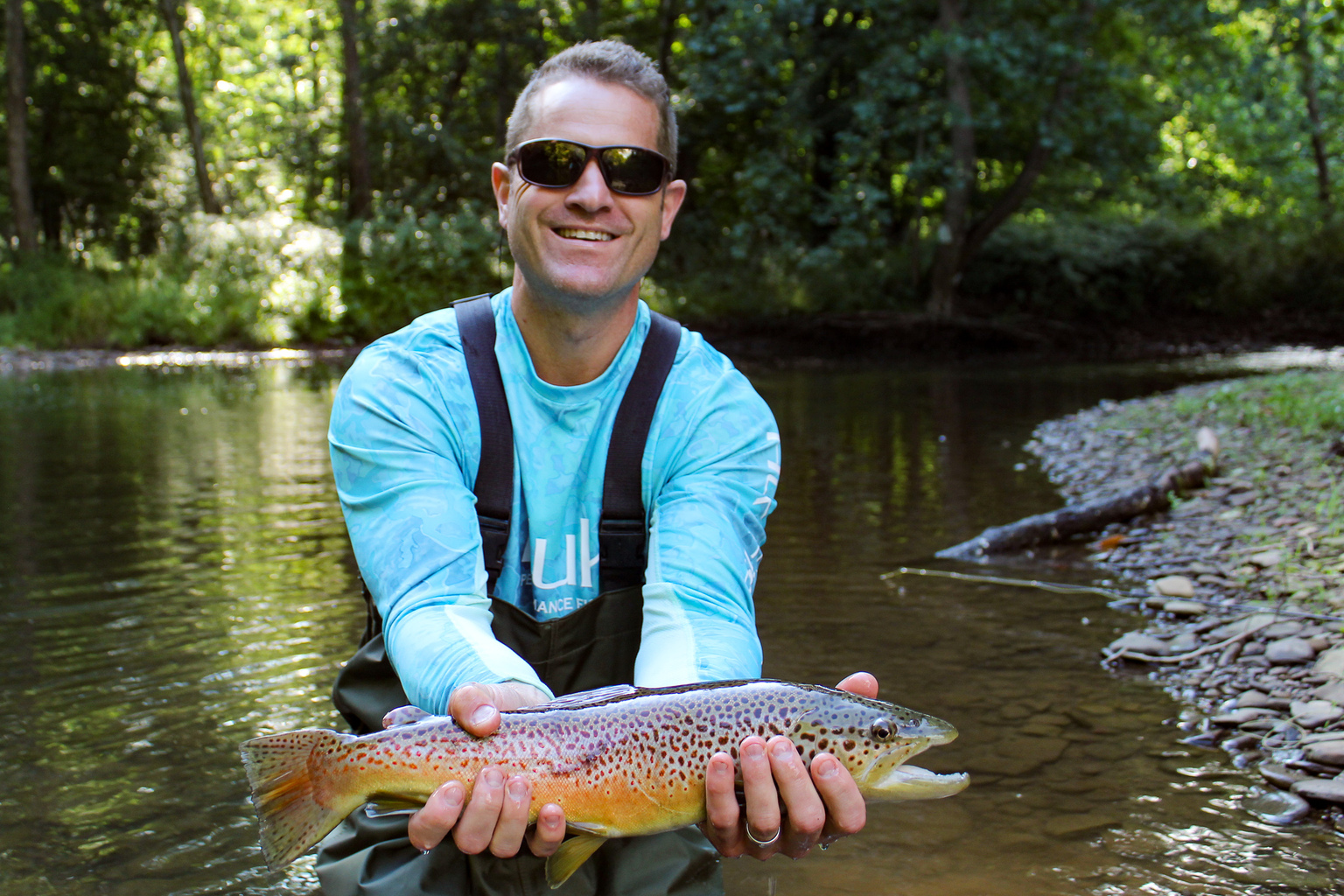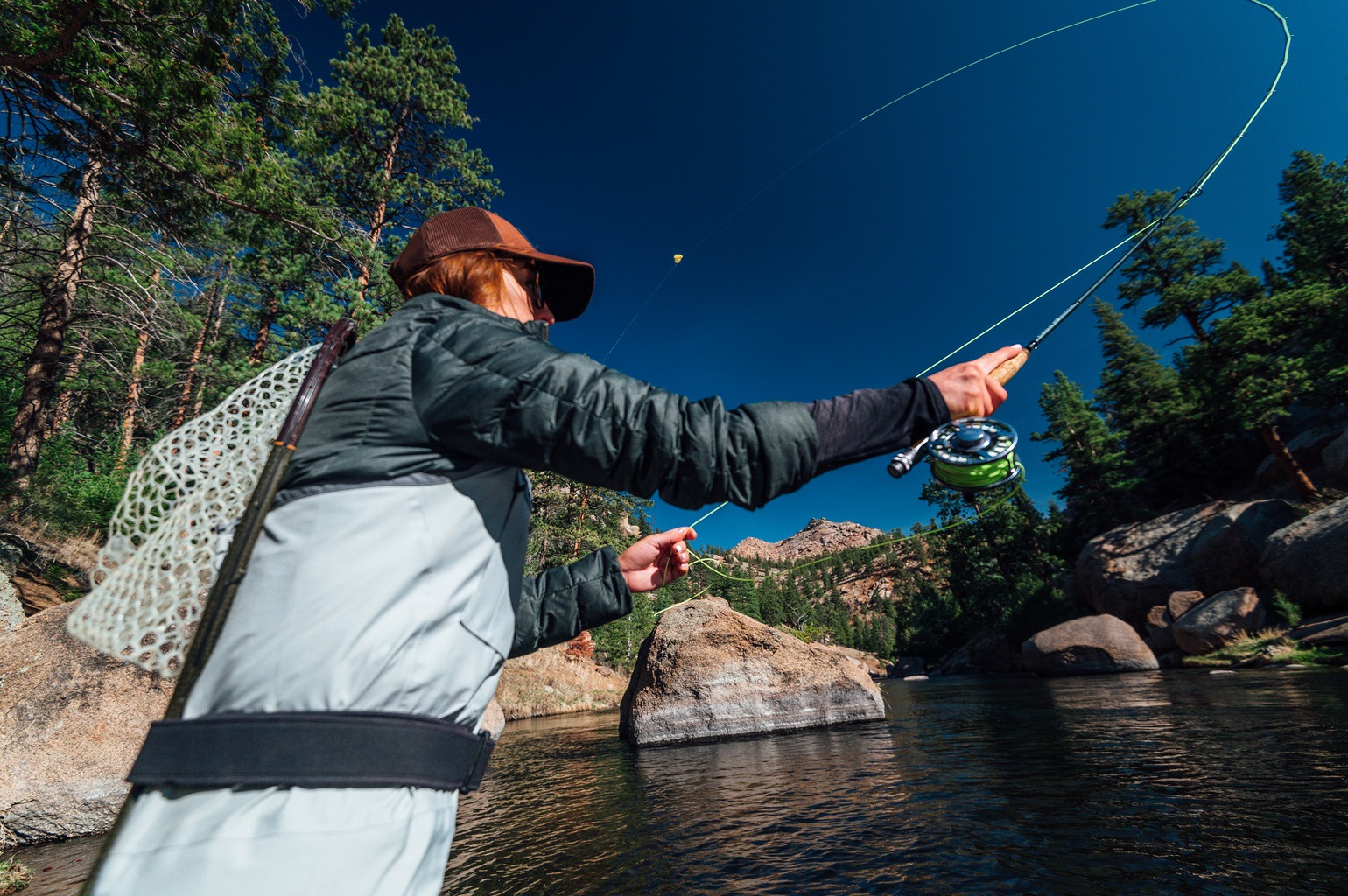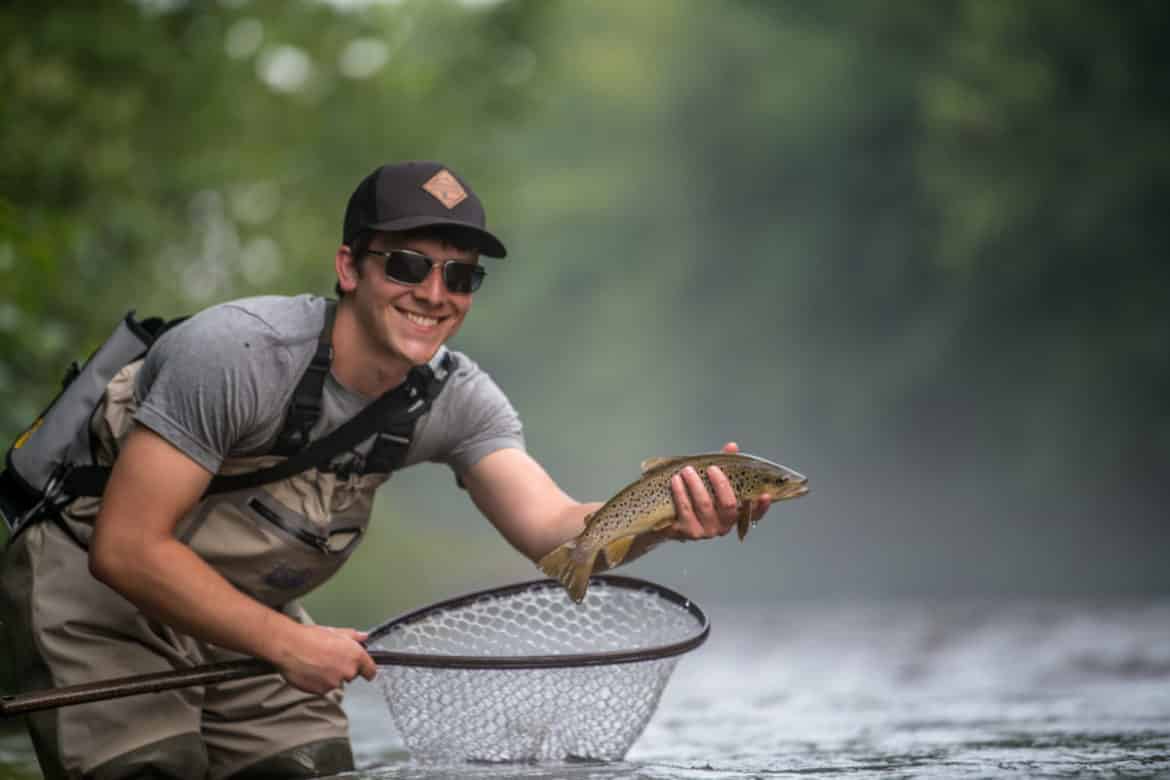How to Catch Trout on Caddis Flies
Anglers who experience their first big caddis hatch aren’t soon to forget the event.
There are surely stronger hatches with bigger bugs that occur throughout the season, but few are as reliable as the caddis. Unseasonal rain or cold can throw bug events like the green drake or sulphurs, but the caddis hatch can be counted on and provides some extraordinary action on both dry flies and nymphs. With that said, it can sometimes be a bit tricky to master and there is some frustration to be felt by those not able to recognize what and how the trout are feeding.

What’s a Caddis Fly?
Caddis flies are moth-like insects with tent-shaped wings down the back and long antennae out the front. They are a major food source for trout and go through 3 major stages in their lifecycle.
- Nymphal / larva stage
- Emerging pupa stage
- Winged adult stage
Most fly anglers will see a caddis fluttering above the water and immediately tie on the first Elk Hair Caddis they find and start casting.
Sometimes that will catch you some fish, but it’s best to treat caddis just like any other major hatch and work to imitate the exact color and size. Caddis can come in olive, tan, brown, and a variety of other shades along with sizes ranging from #12 to #20. Trout on technical streams will turn their nose up at a poorly chosen caddis just the same as they will a BWO or Sulphur, so try to analyze the hatch and do your best to match the natural, which usually means being armed with a variety of caddis flies!

Larva
Before caddis hatches start for the day, caddis larvae are active along the bottom and often get swept up in the current. The larvae make cases around themselves to pupate in by gathering stones, sand, twigs and leaves, and wrapping them with silk. Tumble some nymphs along the stream bottom in your nymphing rigs.

Pupa
Swinging soft hackled flies across the stream is an extremely effective way to catch trout that are only keying in on caddis pupae swimming to the surface.

Adult
Simple presentations like the X-Caddis, Elk Hair Caddis, or Missing Link Caddis cover all your bases from caddis laying eggs to cripples stuck on the surface.
Nymph vs. Dry vs. Emerger
What type of caddis fly should I use?
This can be the trickiest question to answer of all because what the fish are doing can be quite deceiving.
One of the tell-tale signs that caddis flies are popping off is watching trout torpedo through the water and actually break the surface to feed. It’s what makes a caddis hatch so unforgettable, but sometimes trout can be feeding subsurface and give the look of a fish that’s feeding on dries. This is what’s difficult for anglers to pinpoint and can lead to frustration when offerings are being ignored.
To make matters more convoluted, trout can be simultaneously feeding on dries and emergers as the hatch goes on!
That’s why one of the best strategies to deploy during a caddis hatch is to run a dry-dropper setup with the dropper being a caddis emerger. It might seem a bit off to do this, but having two flies in the upper third of the water column can do wonders in imitating multiple caddis life cycle stages.
How do you fish caddis flies?
Where caddis are really different from other hatches is the ability anglers have to provide a little action to the flies. Caddis act quite erratically when they’re on the water, which leads to constant bouncing around upstream and downstream in random movements. It’s because of this that trout can be seen thrashing after the naturals in a scene that looks more like sharks hunting prey rather than trout looking to eat a bug.
When fishing caddis flies as a dry fly, most times a perfectly drag-free drift is what you’re shooting for, but that can change with caddis. By wiggling the rod top, a slight retrieve, or really focusing on the swing of the fly, anglers can better match what the naturals are doing, and as such, give a more realistic showing that trout can’t resist!
Try a drag-free drift for upstream presentations. As your fly drifts past you or on a downstream presentation, try picking up your rod tip high and wiggle the line to skate the caddis dry fly across the surface a bit. Caddis like to skate while depositing their eggs in the late afternoon.
Targeting Rising Trout with Caddis Flies
Approach downstream of the trout at an angle as if you’re stalking the trout. Avoid making a splashy entrance and limit your profile.
When trout are rising all around you, focus on each of them one at a time. Limit your casts to 20-feet for accuracy and to improve your speed of reacting to strikes. The more line you have out on the water, the less control you really have over your line. This leaves room for error and poor presentation.
- Use 5x or 6x leader and tippet.
- Use a long 9-foot leader for soft, delicate casts.
Lead rising trout several feet with a ‘fly-first’ presentation. With this method, the only thing the trout will ever see is your fly. The only way to do this is to cast from an angle and mend actively to prevent drag. This will help keep your line from drifting over any feeding trout.
Use floatant often to keep your fly above the surface and in your line of sight.
How To Fly Fish Caddis Dry Flies
Using a caddis dry fly to search for trout is a great way to tackle new streams and rivers. We like to do this by using 2 dry flies at once. You don’t have to use two flies at once as it does add complexity, but it’s an easy way to discover what trout are keying in on.
- Mayfly Imitation: Adams Parachute
- Caddis Imitation: Elk Hair Caddis
We tie the Adams Parachute fly on first and then tie a 12-inch section of 5x tippet off of that to add the Elk Hair Caddis. Feel free to switch it up and change flies until you find something that works.
Target the seamlines that funnel bubbles and debris into one channel.
Look for fallen trees, branches, beaver dams, and boulders that break the flow and provide eddies, side-pools, and soft pocket water. Casting around these areas and several feet below will be ideal fishing spots.
Seams, where bubble trails are funneled into, are also great places to find trout. Water seams form where slow water meets fast water, sometimes even forming a swirling pool. You’ll regularly find these off to the sides of the stream and large boulders.
How To Fly Fish Caddis Pupa Flies
Honestly, imitating the behavior of emerging insects can be tricky! Many species of caddis flies crawl out of the water onto rocks and banks, however, the vast majority swim up to the surface and hatch quickly. Unlike mayflies, they do not drift downstream for very long. In fact, most emerging caddis flies take flight almost immediately after breaking the surface.
Trout will often prefer only the emerging caddis pupa and completely ignore the adult caddis flies. So let’s breakdown how to fish caddis pupa!
The easiest way to fish pupae is with soft hackled wet flies.
The whole idea is to cast your line downstream to the side and let the flies swing across the stream and down.
Letting your line swing across the stream allows you to cover more water. Although insects do not swing across currents, fish don’t seem to care. As your flies swing across the currents, you follow the line with your rod until your line completes its swing. Let the fly complete its swing. The line will straighten out and in the process, your fly will do something extraordinary. Your fly will rise to the surface like a swimming larva. That’s it! That is it in its basic form. Here’s more on fishing soft hackles.
How To Nymph Caddis Flies
There’s nothing really special in the technique for nymphing caddis flies. It’s just the same as how you would fish any other nymph pattern. We prefer to fish our caddis nymphs in multi-fly rigs either under an indicator or tight-line nymphed.
You could go a little fancy and do a hopper dropper on caddis flies by dropping a nymph below a dry fly.
Here are our favorite caddis nymphs:
Caddis are dependable and a staple snack for trout everywhere. They’re certainly a fly that anglers need to have plenty of and knowing how to fish the caddis properly is important to catching fish. Treating the caddis just like other hatches and trying to nail down the specific size and color of the bug is the first step, followed by knowing what stage the trout are feeding on and how to best fish that way. Those who do that will be well-rewarded with a day full of action!
Fly Fishing Made Easy 👍
Our Quarterly Fly Club ships 1,000’s of flies to anglers all across the United States. Receive curated fly assortments selected for the season with in-depth articles on how to fish them. Great for beginners to learn and for intermediates to discover new flies.




